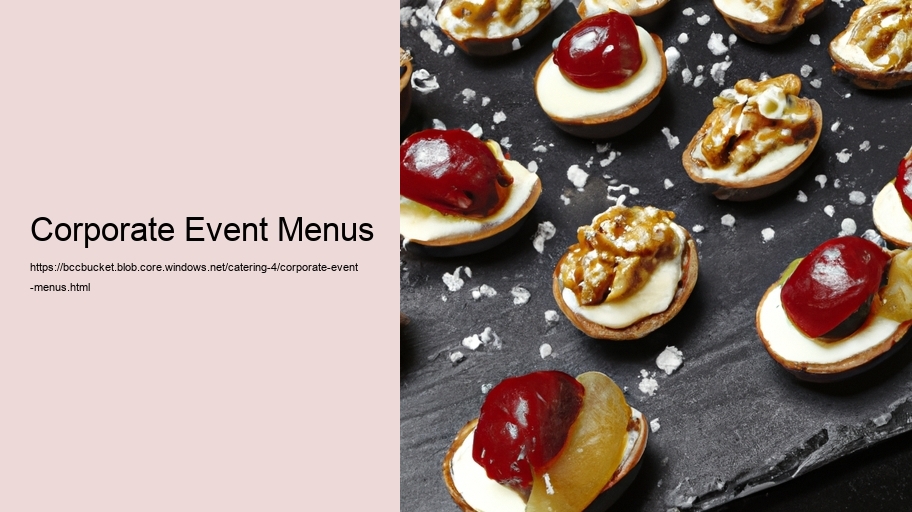Corporate event menus play a pivotal role in the success of any corporate gathering, be it a small meeting or a grand gala. They are not merely collections of dishes but are a reflection of a company's brand, ethos, and the message they wish to convey to attendees. The craft of curating a corporate event menu requires a delicate balance between creativity, practicality, and an understanding of the event's audience.
When planning a corporate event, the menu sets the tone and can either elevate the experience or leave a lackluster impression. It's essential for event planners and caterers to collaborate and carefully consider various factors such as the event's purpose, the attendees' dietary preferences and restrictions, the seasonality of ingredients, and the logistical aspects of serving and timing.
Firstly, the event's objective must align with the menu. For a product launch, one might opt for innovative and adventurous cuisine that reflects the novelty of the product. On the other hand, an annual shareholders' meeting might call for a more sophisticated and traditional selection to mirror the company's established reputation.
Understanding the audience is critical. A menu that encompasses a broad range of dietary preferences and restrictions shows thoughtfulness and inclusivity. Vegetarian, vegan, gluten-free, and allergy-friendly options are no longer mere afterthoughts but integral components of a modern corporate menu.
Seasonality and sourcing of ingredients also convey a company's values. Locally sourced, fresh ingredients not only taste better but can also communicate a commitment to sustainability and support for local businesses. This not only adds a narrative to the dining experience but can also positively impact the company's image.
The format of the event significantly influences the menu structure. A standing cocktail reception might feature a variety of hors d'oeuvres and small bites that encourage mingling and conversation, while a seated dinner might require a more structured multi-course meal. Buffets and food stations offer versatility and can cater to diverse tastes, but they also require more space and logistics planning.
Moreover, the presentation of the food is a visual representation of the company's attention to detail and creativity. Innovative presentation and interactive elements like live cooking stations can make dining an engaging activity that adds to the event's memorability.
Caterers must also be mindful of serving logistics. The timing of courses should be synchronized with the event's agenda, ensuring that meals complement the flow rather than disrupt it. Efficiency in service is crucial in maintaining the event's pace and keeping attendees focused on the event's purpose.
Lastly, a corporate event menu should always leave room for a sweet note – desserts. Desserts can be conversation starters, and whether they're indulgent chocolate creations or fresh, zesty sorbets, they should be a fitting finale to the culinary experience.
In conclusion, crafting a corporate event menu is an art that requires thoughtful consideration of the event's message, the attendees' needs, and the seamless integration of taste and presentation. A well-executed menu can enhance the overall event experience, leaving guests with a lasting impression not only of the meal but also of the corporate host's brand and hospitality.
